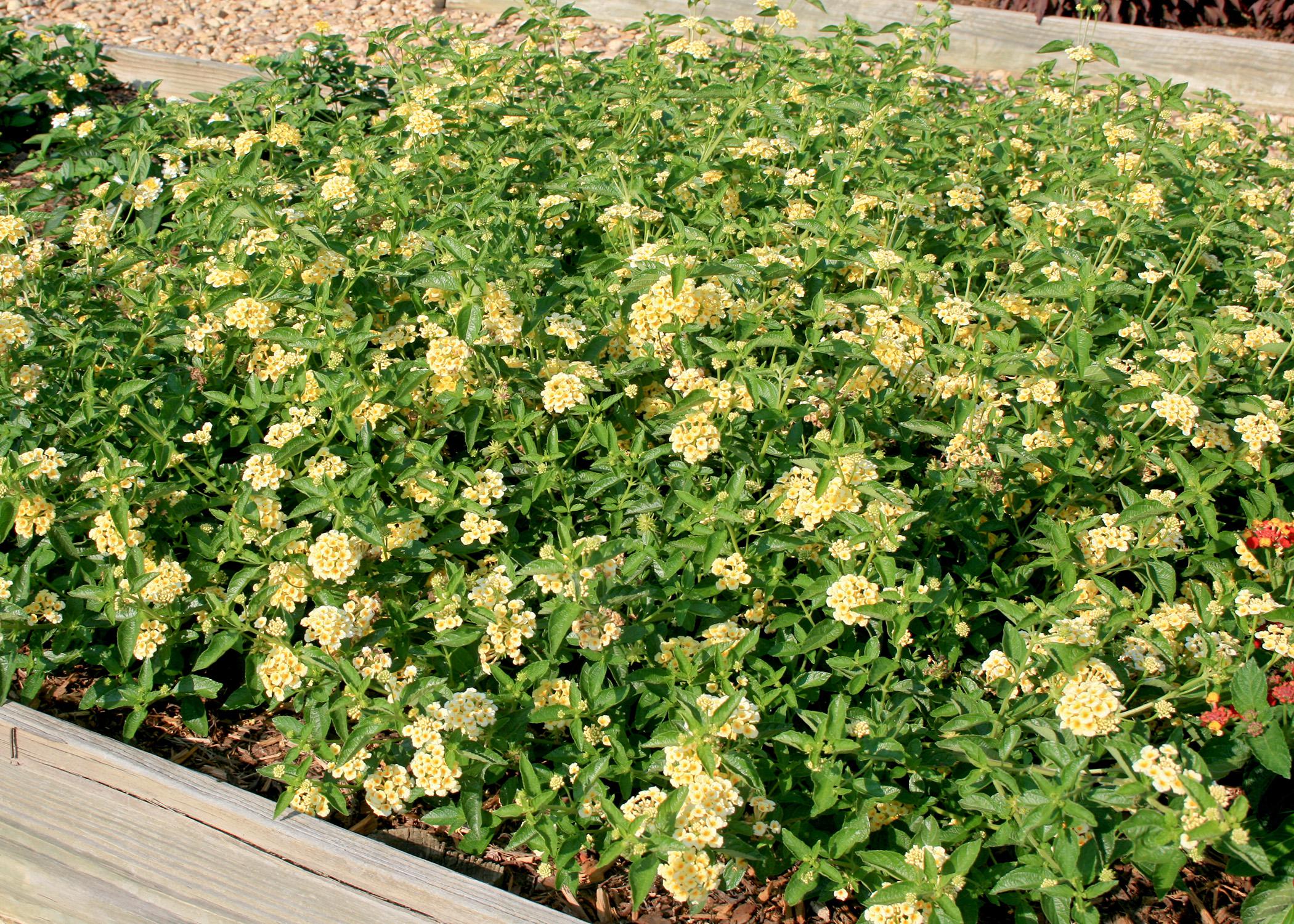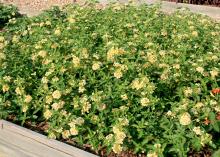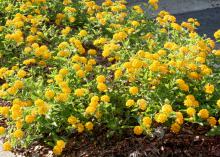Information Possibly Outdated
The information presented on this page was originally released on August 3, 2015. It may not be outdated, but please search our site for more current information. If you plan to quote or reference this information in a publication, please check with the Extension specialist or author before proceeding.
Sturdy, colorful lantana provide summer beauty
During the annual dog days of summer, it’s a really good thing to have reliable plants in the garden and landscape. One of my hot summer go-to plants is the lantana with its nonstop color.
Lantanas are versatile plants that will thrive in the heat and humidity, like the 118-degree heat index we had in Ocean springs this past week. Whew! There are many great lantana selections available for our gardens, from 4-foot specimens to sprawling ground-cover choices, which come in too many colors to list.
Lantanas are perfect for Mississippi landscapes. In fact, lantana selections have twice been chosen as Mississippi Medallion winners.
The very first medallion winner in 1996 was New Gold lantana. Its bright, golden-yellow flowers are outstanding. The plant is vigorous and low growing with a dense, trailing habit that may reach 1 to 2 feet tall and spread 3 feet. Two closely related selections with similar growth habits are Butter Cream, with bright yellow flowers that transition to creamy white, and Silver Mound, with pure-white flowers.
The second Medallion winner was Sonset lantana, selected in 2003. The flowering show begins yellow and transitions through orange, red, magenta and purple. The fact that they have multicolored flowers is an interesting characteristic of lantana selections.
When choosing a lantana for use as a ground cover, I definitely recommend the Luscious series. My favorite would have to be Luscious Lemonade. These flowers are sunshine yellow, and, when viewed early in the morning, especially when there is dew on the plant, the flowers take on a two-toned appearance.
Other Luscious color choices are Tropical Fruit, a warm yellow with orange and reds; Grape, which is a nice, bright purple; and Pina Colada, a cool, refreshing white and yellow.
The only pest of any significance to watch out for is the lantana lace bug, which produces leaf stippling and tar-like frass on the undersides. Heavy infestations reduce flowering and can even cause the plant to defoliate. We’ve observed this in some of our landscape plantings in Biloxi at the Mississippi State University Coastal Research and Extension Center. The lantana will leaf out and flower again, and pruning the damage back will help stimulate regrowth.
Apply systemic insecticides to the plant root zone during May and July. Systemic insecticides include dinotefuran (such as Greenlight Tree and Shrub Insect Control with Safari) and imidacloprid (such as Bayer Advanced Garden Tree and Shrub Insect Control). Allow several weeks for these insecticides to work because they must spread through the plant.
Light pruning through the summer helps maintain the size and tidiness of your lantanas. It also helps to stimulate more flowering and a bushier structure. Fertilize once per week with a water-soluble fertilizer to maintain flowering potential. In the early spring, cut stems back hard to about 4 to 6 inches to make room for new growth.
Always plant lantana in full-sun locations with good landscape bed drainage. Once established, lantanas are drought tolerant. During these hot times, the flowering show will make your landscape pop.










